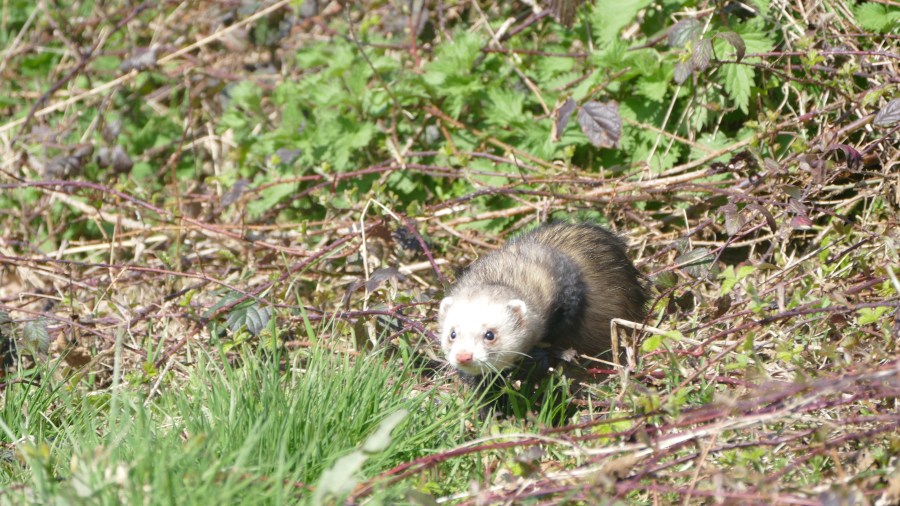It’s no secret that rabbits and deer can cause widespread and expensive damage to vines and the last thing a member of the public wants to see on a winery tour is a rat.
Pest controller Barry Luckhurst is only too well aware of the issues viticulturists and winemakers are facing having spent many years tackling the destructive nibblers, as well as many other unwanted creatures, at various vineyard sites across the South East of England.
With over 30 years of experience in the industry, Barry, who heads up Kent-based Olde English Pest Control, has an almost encyclopaedic knowledge of vineyard pests, country ways and animal behaviour allowing him to plan and implement cost-effective pest control regimes.
“Unfortunately, there are too many hobbyists who offer ‘free pest control’ with the idea in mind that pest control is just about wandering around in the sunshine on Saturday with a gun under their arm,” said Barry Luckhurst. “In reality, it is a way of life which involves a great deal of experience, judgment and knowledge. It isn’t something you can pick up over a couple of weekends and managing the population effectively takes dedication.”
In Barry’s case pest control is a passion and something which he has picked up over a lifetime. “I knew the game laws before I could walk and I was always determined to work in the countryside and use my experience to help farmers and growers,” said Barry, who set up his own business at the age of 24.
Impressive results
Driven by a love of the countryside and wildlife, Barry only uses humane, environmentally friendly methods, such as netting, drop boxes, trapping and a whole variety of methods to suit a given situation. While he dispatches unwanted pests carefully and without cruelty, it doesn’t stop him from doing a remarkably thorough and quick job, whether he is tackling an urban garden or 100-acres of vines.
When a Kentish vineyard was suffering from severe rabbit damage to the vines across its various sites they called in Olde English Pest Control with impressive results.
“I dispatched 209 rabbits in three weeks across 17 acres,” said Barry. “When population numbers are excessively high, I will use netting and ferrets to dispatch the animals humanely. Once I have carried out an initial sweep and brought the problem under control, we enter the maintenance phase. I will visit the sites a few times a month with a ferret and a licenced shotgun to take care of the odd rabbit and keep the levels down.”
With wine tourism on the up, increasing numbers of vineyards now open their doors to the public seven days per week. In these instances, Barry assures that discretion is a priority and is able to carry out his work at night, but also says that one vineyard which has successfully incorporated the pest control conversation into the tours has found that the public leave better educated about the challenges viticulturists face.
Operating nationally, with a solution to any pest problem which arises, after an initial site visit Barry will implement a tailored programme of control, as no two sites are ever the same. To effectively monitor the results, Barry discuses progress with clients at every stage and provides regular written reports which vineyard managers can use to quickly build a picture of the on-going pest problem and how it is being dealt with.
“Rabbits can cause huge problems in vineyards and keeping numbers at a minimum is not so much a cost as an investment,” said Barry. “Vineyard managers should call pest control in as soon as they see the first signs of damage. Ignoring the issue, in the hope that it will get better on its own, is only going to allow the population to grow. It doesn’t take long for a handful of rabbits causing minor damage to turn into hundreds causing absolute carnage.”
Licenced to sell
Alongside rabbits, vines are also at risk from squirrels which have a habit of stripping bark from the trunks, and rats also feature highly on Barry’s hit list.
“No one wants to see a rat on a vineyard tour and producers with wineries, cafés and restaurants will all need certificates and detailed pest control regimes in place for the Food Standards Agency,” said Barry. “Growers are no longer able to buy rat bait without a licence and on top of that, it’s a job that really needs doing properly. I have plenty of experience in tackling even the heaviest infestations around wineries, barns and outbuildings.”
Deer can also cause big headaches in the vineyard, especially in Spring when other food sources are scarce and vine shoots start emerging. As well as limiting yield in an established site, in young vineyards, damage to shoots can set growers back an entire season and needs addressing early. While fencing can help to keep unwanted four-legged foragers out of the vineyard, it can often be a costly investment.
“I am working with a vineyard which has looked into fencing its 55-acre site,” said Barry. “To have a competitively priced deer fence put up it will cost in the region of £60,000. Fences can still be breached so the vineyard manager has decided that to protect the whole site it is actually easier, and cheaper, to work with a pest controller.”
While pest control to some might seem like a ‘necessary evil’, Barry is quick to point out that alongside his humane methods, he is also licenced to sell game into the food chain.
“Game is very popular at the moment and there are lots of uses for the meat which means there is no waste,” said Barry. “A vineyard I work with takes great pride in being able to serve venison from the estate in its on-site restaurant. Customers love the fact that the meat is naturally reared and traceable, and it adds to their experience of visiting the vineyard.”




